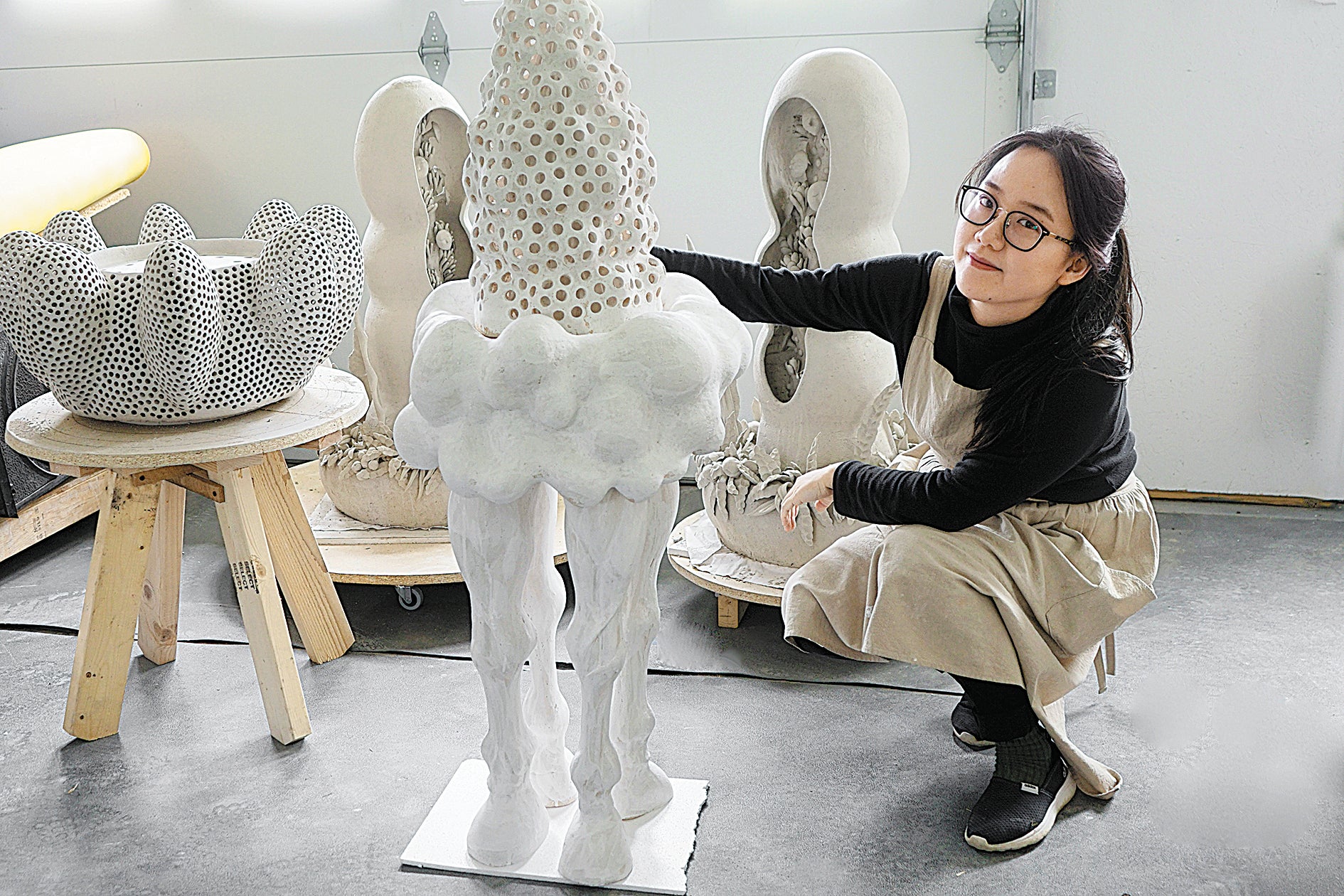Ceramic artist moulds cultural interaction
THE ARTICLES ON THESE PAGES ARE PRODUCED BY CHINA DAILY, WHICH TAKES SOLE RESPONSIBILITY FOR THE CONTENTS

Liang Wanying’s life revolves around ceramics, her two children and farming.
Her reserved personality and disinclination towards social engagement have made her predisposed to rural life and allowed her to concentrate fully on art creations true to her inner world.
The artist, from Shaanxi province in Northwest China, has stunned her audiences with a series of surreal ceramic works that have been displayed in museums in China, the United Kingdom and the United States in recent years.
Many of her ceramic works contain elements inspired by architecture and plants and are supported by a structure resembling the legs of a horse.
“I want to show the human desire of freedom in growth through the use of plants and horse legs, and the necessity of adapting to social rules via the architectural confinement,” Liang says.
Her recent works about personal identity at the Shanghai Pearl Art Museum shed light on her interactions between Chinese and Western culture.
As a Chinese woman living in a sparsely populated rural part of the US, Liang has transformed her personal experience into creative inspiration.
At a very young age she was exposed to traditional Chinese folk culture, the grandeur of ancient architecture and the allure of ceramics in the Shaanxi capital, Xi’an.
Ancient buildings in the city such as the Bell Tower, Drum Tower and Giant Wild Goose Pagoda are etched into her memory. Those elements have expressed themselves in the form of half-open spaces and pagodas in Liang’s works.
Frequent visits to the city’s Shaanxi History Museum allowed Liang to get a good measure of the beauty of ceramics.
“It felt magic to me how a ceramic item can retain its features after thousands of years. I couldn’t help but wonder who made them, and under what circumstances.”
The idea of her own ceramic works possibly being appreciated in the distant future had her opt for ceramic art in 2008, her second year at the Central Academy of Fine Arts in Beijing. The experience opened her eyes to the world of ceramics, especially modern pottery, and enabled her to pick up art skills and mature her understanding of the medium.
After she graduated in 2011 she continued her artistic pursuit in the city of Jingdezhen, the world-famous ceramics centre in Jiangxi province. There she met artists from all over the world, while soaking up the presence of traditional ceramic art.
After five years working and living in Jingdezhen, Liang received an offer and a scholarship from the New York State College of Ceramics at Alfred University. That was when Liang experienced the differences between the Oriental and Western interpretations of ceramic art.
“In China ceramic is tightly connected with culture and history, and we have a sense of awe towards ceramic art and pay more attention to inheritance,” she says.
But in the US the focus has been on breaking away from the past, she says.
In 2018, during her study at Alfred University, she tapped into her sense of confusion and created the work I Do Not Know I Am a Guest When I Dream.
The series features human beings, animals, plants and vessels, which Liang says represented her dissociation from herself, which is a common psychological defence mechanism against pressure in the real world.
She hung soft sculptures made from white paper from the ceiling, surrounding the white standing ceramic sculptures.
When people went into this space, most associated it with marriage because the wedding ceremony is traditionally white in the West.
“However, some of my Asian friends connected it with funerals.”
People will comprehend artwork based on their own background. So, there will be different understandings of the art pieces floating in the space simultaneously.
“When people from different backgrounds get interested in these white standing sculptures in a shared space, a kind of communication will start fermenting,” she says.
Subscribe to Independent Premium to bookmark this article
Want to bookmark your favourite articles and stories to read or reference later? Start your Independent Premium subscription today.